|
We are finally going to differentiate what true allergies are vs. intolerance and sensitivities.
‘Allergies’ have become quite the epidemic with our pets lately, and we are finding that every issue is deemed as an 'allergy', but what is actually a true allergy? Let's find out! Allergy
With all of these examples, the intestinal epithelial barrier has been compromised, remember that our pets are resilient, and might now always show outward symptoms of how badly the gut has been compromised. Gut barrier disruptors are compounds capable of activating and damaging the intestinal barrier, which can lead to issues and conditions like IBD, SIBO and leaky gut, with an increase in the uptake of allergens and other inflammatory compounds from the intestinal lumen into the blood stream for more direct contact with the immune system. However, of all the cases we see that are deemed with as ‘allergies’, only a very small fragment are true allergies. A very good portion of issues we see have nothing to do with allergies at all, especially when it is an all year round type of thing. This is why it is always important to get to the root of the problem, and to see which of the body’s organ systems are off. Contact us to book your consultation if you suspect your pets have any of the above symptoms and would like to put them on a customized approach to reach their health goals.
0 Comments
There can or will be times when it will be necessary for your pet to be prescribed antibiotics by your veterinarian, but what about probiotics? Should you stop supplementing your pet(s) with a probiotic (hopefully your pet is already on one!) until after the final round of antibiotics is complete? I used to believe the answer was yes, but after developing my own probiotic during a very difficult time when my dog Matty had to go on antibiotics due to his very severe injury, which completely fried his gut, I now believe that if he were on it while on antibiotics, the side effects of the antibiotic would not have been as severe, or if any. There is more and more research coming out supporting the theory that supplementing pets with probiotics even while on antibiotics can diminish any negative side effects of common antibiotic drugs such as Clavamox. In fact, ‘back in the day’, a doctor would have always prescribed a probiotic with an antibiotic- how that clinical practice got obsolete is beyond me. A Reason To Pair Probiotics and Antibiotics: “This meta-analysis reached a similar conclusion as the 2006 meta-analysis: Probiotics appear to be effective in preventing and treating AAD in children and adults receiving a wide variety of antibiotics for a number of conditions. The results were also consistent with those of a new meta-analysis that looked specifically at one pathogen—and found a reduction of 66% in C difficile-associated diarrhea in patients taking probiotics with their antibiotics.” (Rodgers B, Kirley K, Mounsey A. PURLs: prescribing an antibiotic? Pair it with probiotics. J Fam Pract. 2013 Mar;62(3):148-50. PMID: 23520586; PMCID: PMC3601687.). AAD (antibiotic associated diarrhea) is a severe side effect of antibiotic use. When we were testing out Matty’s Blend probiotic formula way before it was Matty’s Blend, we found that although it did eventually correct the gut in a number of days from the damage of the antibiotics, it could have very possibly prevented the whole problem in the first place. That is why we recommend supplementing Matty’s Blend even while your pet is on an antibiotic, and yes, its great for cats too! Especially because of the gut anti-inflammatory ingredients it contains such as slippery elm bark, licorice root, larch and humic and fulvic acid, with strategically selected probiotic strains at the right dose and amount. “The use of probiotics is a promising approach for manipulating the gut microbiota to promote host health [20,21,22,23]. Studies have shown that probiotics exert prophylactic or therapeutic activities in a variety of diseases such as IBD, antibiotic-associated diarrhea, colon cancer, allergy, type 2 diabetes, and atopic dermatitis in humans [20,21,22,24]. With positive effects such as improving growth performance, promoting intestinal health, and enhancing resistance against infections, probiotics have been explored as promising antibiotic alternatives in animal production [25,26]. An increase in nutrient digestion and absorption, improvement in intestinal morphology, optimization of the gut microbiota and suppressed inflammation have been linked with the health benefits of probiotics in farm animals [23]. Species and strains belonging to Lactobacillus, Bifidobacterium, Enterococcus, and Saccharomyces are commonly used probiotics in functional foods and dietary supplements.” |(Yang Q, Wu Z. Gut Probiotics and Health of Dogs and Cats: Benefits, Applications, and Underlying Mechanisms. Microorganisms. 2023 Sep 29;11(10):2452. doi: 10.3390/microorganisms11102452. PMID: 37894110; PMCID: PMC10609632.) Clinical Pearl:
Combine Matty’s Blend with Missy’s Chance that acts as a prebiotic to fast track your pets’ gut microbiome health! What are free radicals and why should we learn about them? Free radicals are important to understand as they pertain to our pets health and well being (and ours too actually), and it actually determines how well our pets age! So, yes, that important! In the technical term, a free radical is an atom or group of atoms that contains at least one unpaired electron. Electrons are particles that are negatively charged that typically occur in pairs, thus forming a chemically stable arrangement. If an electron is not paired, another molecule or atom can easily bond with it, causing a chemical reaction. Free radicals are very unstable, and can create dramatic changes in the body, they can cause a lot of oxidative damage, however, each free radical can only exist for a tiny fraction of a second, it’s really the damage that it leaves behind that can be irreversible, particularly damage to heart muscle cells, nerve and certain immune system sensory cells. Are all free radicals bad? Not all free radicals are bad, free radicals are typically present in the body in small numbers, biochemical processes naturally lead to the formation of free radicals, and under normal and healthy circumstances, the body can and does keep them in check. There are even free radicals the immune system makes (which is why we must always keep the immune system strong), that destroys viruses and bacteria. There are other free radicals that are involved in producing hormones and activating enzymes, we even need free radicals to produce energy and various substances that the body requires. When do free radicals become bad? Free radicals become a detriment to health when there is excessive free radical formation, this is where damage to tissues and cells can occur. It can also become a chain reaction, when the formation of a large number of free radicals occur it then stimulates the formation of even more free radicals, leading to even more damage. The presence of dangerously high number of free radicals in the body can even alter the way in which cells code genetic material. Changes in protein structure can occur as a result of error in protein synthesis and that is very bad, as the immune system can see this error as a foreign substance and try to destroy it. The formation of mutated proteins can eventually damage the immune system and can lead to cancers such as leukemia, as well we other diseases. In addition to damaging genetic material, protective cell membranes can be destroyed by free radical damage, and can upset the calcium levels in the body. There are many different factors that can lead to free radical damage in the body, some that are not always in our control, such as the environment and the polluted air we breathe (think chem trails, pesticides sprayed, cell phone towers), and some that are such as diet and stress. When the body obtains nutrients from the diet, it uses oxygen to create energy, it’s a process called oxidation. Oxygen molecules containing unpaired electrons are then released, and if they are released in too high numbers it can cause damage to the body. Oxidation occurs more readily in fat molecules than protein or carbohydrates. This is why it is extremely important to only feed quality food and supplements to our pets! I’m an extreme advocate for quality supplements as I have found some pet guardians, even though they feed a quality diet, supplement using poor quality supplements, which can actually undo what they are trying to do with the diet, for example, most omega-3 supplements on the market (like 99%) are already rancid before the bottle is even opened! When you offer rancid oils and supplements, it causes a lot of free radical damage in the body in a concentrated way, so you are then spending extra money on something that actually does the opposite of what you are trying to do! Do free radicals accelerate aging?
Yes, excess free radicals do accelerate aging when the body produces more free radicals over time than scavengers, and that resulting imbalance contributes to the aging process. Which as we all know, our beloved pets don’t need help with that, they already age fast enough- that is why we take a dogs age and times it by 7. How do we effectively deal with excess free radical damage in the body, or slow down aging? Substances known as antioxidants neutralize free radicals by binding to their free electrons. Of course, not all antioxidants are created equal, and some have more specific purposes than others, for example, the antioxidant Coenzyme CoQ10 is especially beneficial for the heart. The antioxidant lutein is especially beneficial for the eyes (ocular health). There are water soluble antioxidants and fat soluble antioxidants. One of the most powerful antioxidant is called glutathione, which, if the body is overall healthy, it can make this antioxidant effectively, which the body actually needs to not only destroy free radicals but to detoxify and protect the body as well. To keep things simple, feed a fresh whole food diet, not kibble, as kibble goes rancid very quickly (before the bag is even opened unfortunately), add quality supplements yourself where you can control the quality of vitamins (also antioxidants), and of course, good quality fats, my personal favorite way of adding more antioxidants to my pets diet is by adding a quality greens powder to their food and a quality omega-3 supplement. We all want to see our pets thrive for life, which means less vet visits and enjoying our pets to the fullest, while maximizing the quality time we share them. While some might say there are many paths to Rome when it comes to health, we need to stick with the laws and principles of health, which I will explain in further detail, but a good example for this would be; if our bodies are made up of 60% water, then consuming water on a daily basis at a percentage that replenishes the body to maintain that 60% will be suffice, if you get dehydrated even 2%, it will lead to physiological stresses on the body with symptoms such as headaches and organ depletion. Losing up to 11% of water from the body can even be fatal. So, hydrating the body on a daily basis with the appropriate amount of clean water is a health principle, it is a natural law, we are made up of water, and therefore, we need to consume water. For our dogs and cats, there are also such principles. If I feed my dog and cat, who are carnivores that thrive on meat and some vegetables, a high carbohydrate and dry diet, I am breaking a law (or principle) to their health. Why? Because I am feeding an animal a diet that it was never designed and meant to consume. So, feeding a species appropriate diet will be the first and most important thing one can do to add life to years and years to life when it comes to their pets, a diet that is rich in bioavailable nutrition, anti-inflammatory, and proteins the dog or cat can have or tolerate, (not all proteins are beneficial to every dog and cat), some breeds tend to thrive on certain proteins while others do not, epigenetically speaking. The proper diet is key and crucial for thriving, no matter how much or how little you supplement, because you can’t out-supplement a bad diet. Next, seeing what your pet is lacking and supplying it. It can be as simple as adding a probiotic and digestive enzyme to their meals to help them digest and break down the food, such as with senior pets, as they get older they produce less enzymes, and so supplying your pet’s body with enzymes and a probiotic will help them to digest and break their food down properly to get the nutrition they need, which will get them to thriving. Another example would be, as your pets gets older, there will be natural cartilage and collagen breakdown, supplementing with either glucosamine and/or hyaluronic acid will help bring the pep back in their step, because you are supplying their bodies with what they need. Whatever is missing, we add. Another example would be supplying them with essential fatty acids like omega-3s, called essential because they don’t produce it in their bodies therefore they need to get it from outside sources. Super food concentrates add vitality back where diet falls short. The unique polyphenol properties actually help the body use food better, polyphenols help the micro biome utilize nutrition from concentrates. Here are just a few supplements proven to add vitality to your pet’s life and quite possibly, more (quality) years (these supplements were specifically studied for longevity) and have a very high ORAC value (high antioxidant value); -AFA E3 Live algae -Red algae -Wheatgrass -Phytoplankton -Spirulina -Medicinal mushrooms -Olive extract -Quality cold pressed oils such as a variety of omega-3s or olive oil. -Curcumin (extract from turmeric) -CoQ10 (Ubiquinol) -Ginseng -Astaxanthin Super food concentrates are a lot more efficient, and makes your pets more resilient. Again, aim for quality and organic as much as possible. However, to really understand optimal longevity we need to support the pathways and mechanisms to empower and improve health and vitality as our pet’s age. Mitochondria & Aging
What does the mitochondria do? The mitochondria is the engine of the cell, it is responsible for making ATP, which is a neurotransmitter at every synapse. It takes energy to heal! It is also responsible in determining the degree of inflammation and completeness of recovery and so much more. In one of our latest articles, we talked about the coined term, ‘Inflammaging’, age and systemic, cellular, and nuclear inflammation accelerates the mitochondrial breakdown of cells, this is chronic inflammation of course, as not all inflammation is bad, but it has been proven and shown that chronic inflammation will accelerate the aging process. This can happen in many ways, such as through a high toxin load (especially if toxins like heavy metals get inside of the cell), nutrient deficiencies, genetics, physiological stresses, aging, etc. Anything that damages the mitochondria of the cell, will lead to cell death, which will accelerate aging. All Paths Lead To Detox Those who know me know that I am very passionate about precision detoxing. Limiting and avoiding exposure to toxins, such as flea and tick medications, and over vaccinating is key to longevity, also be mindful of cleaning agents used to clean the house that can be very toxic to our pets. Also, don’t forget the water- If unfiltered water affects us in a negative way, then it will most certainly affect them as well, and I find most pet guardians forget about the accumulated dangers of unfiltered water for their pets. But what happens then if our pet(s) have already been toxified? Environmental and metabolic detox is needed, at least once a year. This will ensure that the immune system is not burdened, and all organ systems and drainage pathways are functioning optimally. As well as, protecting mitochondrial health from environmental and metabolic toxins, removing damaged mitochondria and damaged cells, initiating metabolic activation, and addressing accumulated damage and inflammation, hence increasing reliance in entire systems. Primary detox emunctories are; Liver, kidneys, intestines, lungs, stomach and pancreas. Secondary detox emunctories are; Skin, mucus, nose, sex glands, nerves. Keeping these healthy and clean are extremely vital for the totality of health for your pets (and us too!). In conclusion, as long as we are honoring our pets by following their principles to health, and doing our part in making sure they get everything they need, physically, mentally and emotionally, then I believe we are doing our very best for them. Missy’s Story As you all now, everything has a purpose and a story… When Missy was three years old, about 8 years ago, in the middle of winter, she got into an accident where she suffered a hip fracture. We think someone ski-doing on the property passing by might have accidentally hit her by not seeing her. I had at the time just read about the repairing effects of the AFA E3 Live algae, and knew that although she was an already picky eater (this was right before I switched her and her brother over to raw food), she would now definitely not eat, now that she was in pain (even with medication), so what I did was I made up a concoction of a complex that had this very special algae in it, and syringed it into her twice a day. Poor Missy had a green beard and a green chest for weeks! I knew I had to get it into her, as she was barely eating the amount she was supposed to, and she was in dire need of nutrients. To our amazement, within two weeks, she not only recovered, but bounced back, which that in and of itself was an understatement. She was even back to jumping our fence, and running around like she was a puppy again- we were just simply amazed. After that, I switched her and her brother over from kibble and wet food to raw, where they really began to thrive! I knew there was something very special about this algae, and 8 years later, Missy’s Chance is born- This truly gave her the chance to not only recover, but to thrive! The Formula Missy's Chance is a 6-ingredient complex of: Phytoplankton 400mg Spirulina 320mg E3 Live AFA 150mg Wheatgrass Powder 50mg Red Marine Algae 40mg Rose Hips 40mg Missy’s Chance is a complete phyto-nutrition formula that will work as a functional whole food in the body, which will then send healthy messages to the epigenome to signal healthy gene expression. This is an essential formula to any diet, whether you feed your pets dry, wet, cooked or raw. Functional nutrients, which means it is jam packed with bioavailable healthy promoting vitamins, minerals (both macro and trace minerals), antioxidants, phytonutrients (chemicals that are in plants), and so much more! Phytonutrients work in a variety of mechanisms in the body in a very synergistic way, including; -Enhancing cell to cell communication -Enhancing immune response -Converting to vitamin A (retinol) -Repairing DNA damage -Detoxifying carcinogens -Liver support -Brings oxygenation to blood cells -Promoted apoptosis (causing cancer cells to die) *A special note regarding minerals: One of the most brilliant doctors in the health industry has said that minerals without being bound to proteins aren’t a bioavailable source to the body, so the very best bioavailable minerals in the world come from plants. Macro minerals are; Calcium, magnesium, sodium, phosphorus and potassium. Micro minerals are; Copper, iron, zinc, manganese, and iodine. This formula is great for:
Short term effect: Fast nutrition, better health, repair, more energy, anti-inflammatory. Long term effect: anti-aging, longevity, vitality, stronger immune system. Moira getting in on the photo shoot- She loves Missy's Chance! Phytoplankton: This complete whole source of marine phytoplankton is a complete nutrition that goes directly to the cells, one can call it ‘cell food’, as it does not need to be broken down in the G.I. tract. A highly bioavailable source of nutrition, it is a single celled organism that is jam packed with phytonutrients, full complete profile of amino acids, trace minerals, chlorophyll, EPA, fatty acids, protein, carotenoids, antioxidants, vitamins and so much more!! Aphanizomenon flos-aquae (AFA E3Live): This is the star ingredient in this formula, and this is why there is no other pet supplement on the market like Missy’s Chance! AFA is a blue-green algae that has been around for a very long time, it is one of the most primitive life forms on earth. It embodies a whole host of vitamins, including B-vitamins, antioxidants A, C and E, minerals, trace minerals, phytonutrients, amino acids and essential fatty acids. It has been shown to have antiviral, anti-inflammatory, antibacterial, anti-cancer and antioxidant properties. One of the key active components to AFA is phycocyanin, which attributes to its immune boosting effect. Phycocyanin is what gives this incredible algae its blue pigment, whereas the green pigment rejuvenates and strengthens blood via its rich chlorophyll content, the blue pigment strengthens immune function. This potent free radical scavenger helps to prevent disease, inhibit inflammation and revs up stem cell production. The blue pigment is also a COX-2 inhibitor, and this particular enzyme is highly dominant in cancer cells. McGill University researchers found that AFA consumption in humans led to rapid changes in immune cell trafficking. In fact, just two hours after consuming 1.5 grams of AFA, 40% of the immune system’s natural killer cells migrated from the blood stream to the tissues to work on. An additional study in chickens showed that chickens that were fed the blue-green algae had greater anti-tumor cell activity compared to those that went without. AFA is also highly rich in carotenoid antioxidants such as lycopene, beta carotene, lutein, which helps to prevent disease and reduce inflammation. Also, a wonderful source of EPA and DHA omega-3s, which further helps to reduce inflammation, strengthen and stabilize cell membranes, speed up healing and assist in production of white blood cells that eat up bacteria in the body, and produce pathogen fighting antibodies. AFA is also an excellent source of heme iron, which is required by the body for the production of antibodies, as well as zinc, which increases natural killer cells, increases macrophages activity and is responsible for the reproduction of DNA. It also helps the body to detoxify heavy metals and balances blood sugar. On top of everything, AFA is also one of the highest natural sources of PEA (phenylethylamine). This antioxidant works through the endocannabinoid system, where it has a positive effect on mood, and overall feelings of well being. PEA also improves attention span, concentration, memory and stress. Spirulina: This wonderful ancient, blue-green algae grows in warm, fresh water, and takes its name from the spiral shape of its strands! Spirulina gets its deep green color from chlorophyll and its blue color from phycocyanin (C-PC), a strong antioxidant compound with anti-inflammatory, anti-arthritic, anti-cancer and hepato-protective qualities (liver protecting properties). Phycocyanin (C-PC) possesses potent antioxidant and anti-cancer properties. It has been shown to selectively inhibit pro-inflammatory COX-2 Pathway, which is extremely important as it relates to cancer, because COX-2 activity increases malignant tissue. C-PC, much like EPA & DHA, has been shown to suppress the COX-2 enzyme, decreasing inflammation and pain of osteoarthritis. In a study done in 2000, (Reddy et al., 2000), C-PC was even shown to be an even more potent COX-2 inhibitor than a class of NSAID drugs introduced by a couple major pharmaceutical companies. In a 2013 and 2009 study, spirulina was shown that it was a rich source of important nutreints like, chlorophyll, carotenoids, phytonutrients, B-complex vitamins including B-12 and vitamin E, vitamin K, a very wide array of bioavailable minerals, gamma linoleic acid, and superoxide dismutase (a powerful free radical scavenger). Spirulina is also very high in protein, at anywhere between 65% to over 70% protein, which is actually more protein per weight than by any other food. Just an oz. of spirulina can equal to be 16 grams of protein. The protein in spirulina is actually way more bioavailable than (up to 4x more) than beef per gram! Protein is important because it provides the structure for joints, bones, ligaments, tendons, cartilage, muscle fibers, organs and collagen. An alage where you get both micro and macronutrients! Wheatgrass: Wheatgrass is also another wonderful source of nutrients, such as, vitamins, minerals (both macro and micro), proteins, chlorophyll, enzymes and phytonutrients. Wheatgrass is not only nutritive, but it is also detoxifying, especially in the intestines, which is the largest hollow space in the body. It can also aid in digestion, and helps the body break down food and absorb nutrients, thus increasing energy. Wheatgrass is also very safe to give with cancer patients, as a 2015 study showed that wheatgrass has anti-cancer properties, while helping the immune system. A 2017 study Trusted Source found that wheatgrass has an inhibitory effect on proliferation of cells in oral cancer. This means it may stop the cells from multiplying and spreading. It may be due to its high chlorophyll content. Wheatgrass may also lower myelotoxicity that is caused by chemotherapy. Myelotoxicity reduces bone marrow function and can increase your risk for infection. Red Algae: Red algae is in this formula predominantly for it’s unique anti-aging properties. Naturally high in vitamin C, red algae is wonderful for skin cellular health. Naturally a great source of a full spectrum of minerals, (both micro and macro). Red algae is also chalk full on wonderful vitamins, minerals, amino acids, special antioxidants called polyphenols that are very powerful and anti-aging, thyroid health, gut health, immune system health and bone health. Red algae contains mycosporine-like amino acids (MAAs), sulfated polysaccharides, carotenoids, and polyphenols which provide protection against UVB and UVA rays. It is also said to contain both vitamin C and vitamin A, the former of which has been shown to be hydrating, treat inflammatory skin conditions and promote collagen production. Rose Hips: Rose hips were added to this wonderful formula for the bioflavonoid component, which is another class of phytonutrients, including anthocyanin, which give berries their pigment. Very potent antioxidants that helps to protect cells from oxidative damage caused by free radicals, which research shows it can block tumor activity. Rose hips are extremely high in vitamin C, catechins, quercitin, and ellagic acid, and a diet rich in these compounds can help lower inflammation and oxidative stress. Bioflavanoids were strategically added to this formula to help further with absorption of the wonderful components these greens have to offer. It makes this already highly bioavailable formula even more bioavailable. Not all greens supplements are created equal, we all know the saying, ‘An apple a day keeps the doctor away’, but not if that apple is a GMO product and laced with pesticides.
This product was tested for contaminants and heavy metals, potency testing, microbiology contamination testing, is 100% human grade, in a glass jar, and harvested only from pristine environments. To buy Missy's Chance click here. ‘Inflamm-aging’, a word coined from inflammation and aging. Is all inflammation bad and does all inflammation lead to aging? The answer is no. Inflammation in acute circumstances is not a bad thing, in fact it is necessary for the body to heal and repair. Inflammation is a very natural response to triggers such as injury, chemical toxins, microbial infection, free radical damage, etc. However, chronic inflammation at the cellular level is something that should not happen, and if left untreated, can lead to premature aging and even diseases such as auto-immune diseases. Chronic inflammation occurs when the tissues and organs receive inflammatory mediation messages that cause them to over react, and as a result, don’t complete the inflammatory cycle. A big part of keeping inflammation in check is to modulate cytokine activation, essentially, we do this by promoting and keeping T-helper cell balance (more on that later). T-helper cells are a class of lymphocytes that help with the immune system response to inflammation and different threats to the body. A balanced profile of T-helper cells is crucial for immune defenses and tissue homeostasis. When one system in the body is compromised, it can set others off as well. For instance, we know that there is a strong gut-brain axis, and there is also a gut-lung axis as well, everything in the body in interconnected. When there is chronic inflammation happening, there is also free radical damage going on as well, and the right type of anti-inflammatory components such as antioxidants will be necessary. The most common type of inflammation I see is in the gut, and no wonder, with inflammatory ingredients found in pet food like corn and wheat gluten, with meat meals (which are not digestible by the way). When there is inflammation in the body, it actually shortens the telomeres of DNA strands, which can lead to premature aging, the good news is that there are also herbs like astragalus that have been shown to lengthen DNA telomeres. When There Is Stress In The Body
A stressed pet is an inflamed pet. What stress does is it actually shortens the length of telomeres in the body, and just feeds inflammation in the body. Stress promotes higher Th2 levels and lowers Th1 levels, which increases Th17 levels in the body which then increases self-tissue response. To help mediate T-helper cell balance, one would first look into rebalancing healthy Th1 cell activation and modulate the Th2 immune response and balance immune function at the cellular level. For example, during dysbiosis, the intestinal lining becomes a factory for making inflammatory cytokines. The appropriate response to that, is to raise the natural killer cells in the body to combat that. By working in different stages, once T-helper cells are supported to be in a balanced state, it also promotes a balanced immune response. A proper T-cell polarization will not only help to resolve inflammation, but also with killing tissue infection, hollow organ infection (G.I., lung, sinus, bladder), and quieting autoimmunity response. Here are just a few examples of what this does long term to the body if left unchecked; -Allergies -Autoimmune diseases -Arthritis -Cancer -Cognitive issues -Diabetes -Heart disease -Gastrointestinal issues -Kidney and liver disease -skin disorders -UTI disorders Just to name a few! To really understand aging, we have to first see that it is simply not just an automatic result of time passing, rather the result of reversible events that happen in all cells, regardless of the tissue or organ system to which they belong to. There are things that accelerate this process, and there are also things that work the opposite way. For example, did you know that by supplementing with an oil such as an omega-3 that has gone rancid you are actually promoting free radical damage in the body? (side note: make sure you buy your supplements from highly reputable companies). What does this mean? Physiological stress= Inflammation =accelerated aging! This is why quality foods and supplements are so important. Quality foods meaning a species appropriate diet (feeding your pets what they were designed to eat), no GMOs, no antibiotics or growth hormones in food production animals, free of pesticides and any synthetics and fillers. We know that sugar ages us and promotes inflammation, and that is not any different for our pets. Foods that promote inflammation and aging in pets are; -High glycemic carbs -High starch carbs -Low quality proteins -GMOs (Genetically Modified Foods) -A high processed diet that contains chemical additives, artificial colors and preservatives. -Gluten -Sugars -High lectin type foods such as lentils, peas, etc. -Wheat -Soy -Corn… …all these foods prematurely ages our pets, let’s also remember that dogs and cats are carnivores, so these types of foods are not appropriate to feed any way. We as pet guardians want to make sure we do everything we can to slow down aging, which also means keeping inflammation in check. I believe in order to do that, we must first feed functional foods that promote happy and healthy cells, foods that serve as antioxidants, enhance immune system response and cell to cell communication, detoxify carcinogens, repair DNA damage, cause cancer cells to die, and feed easy to digest foods, some examples are; -High quality proteins -Cruciferous vegetables such as; broccoli, cauliflower, cabbage brussel sprouts and bok choy -Greens that are high in phycocyanin and phytonutrients such as; spirulina, AFA E3 Live algae, wheatgrass, barley grass, phytoplankton -Foods high in vitamin C such as berries, apples and rosehips in moderate amounts -Gluten free grains such as quinoa or millet -Bone broth -Quality bee products such as; honey, pollen, propolis and royal jelly -Healing herbs such as slipper elm, Licorice root, curcumin, garlic (in moderate amounts), ginger -Herbs that have been shown to lengthen telomeres such as andrographis and astragalus -Medicinal mushrooms -Red algaes like astaxanthin -Cold pressed oils I am also a very firm believer in detoxing, the right way of course, to lighten the load of the body and the immune system of toxins like heavy metals and pesticides. I believe a heavy toxin load can also accelerate aging, and promote inflammation in the body. When fed and supplemented appropriately, your pets will just thrive throughout their lives and radiate good health, in fact, it is not uncommon for my customers to report to me saying that when strangers meet their senior pets, they just can’t believe they are as old as they are! Now that has to feel good, and don’t we all want that for our pets?
FIV can be divided into three stages:
1) Acute infection/stage (3-6 months):Usually very mild symptoms of recurrent fever, anorexia, lethargy and lymphadenopathy. 2) Subclinical infection/stage (months to years):Usually no clinical signs shown in infected cats, but the disease is progressing. 3) Chronic clinical infection/stage (months to years): The clinical signs and symptoms are;
The best way to prevent this disease is by avoiding having your cat come into contact with wild and feral cats, and sufficiently making sure your cat’s immune system is in tip top shape. Some ways to get your cat’s immune system functioning sufficiently (and by keeping it that way) are;
This is a progressive disease, and the average (so far recorded) lifespan from diagnosis to death is about 5 years. As mentioned, the best preventive it to limit or avoid contact with wild feral and free-roaming cats, and to test all new additions to the cat’s household. FIV has not been found to grow in human cells, so it is not contagious or infectious to humans. Always consult your vet prior to starting any new diet/supplement regimen, especially if your cat is on medications. Canine Viral Distemper (CVD) is a disease classified as a pansystemic disease.
It is a highly contagious and viral disease of canines and other carnivores, that being said, depending on the strain of the virus, it varies in virulence from mild to fatal. Although the name suggests it only effects dogs, CVD can effect cats as well as other carnivores such as ferrets. Although the disease can infect pets of all ages, the most common age range is between 3 to 6 months of age. CVD is a paramyxovirus that is one of a group of RNA viruses that are predominantly responsible for acute respiratory diseases, and are usually transmitted through airborne droplets. Most routine cleansing agents and disinfectants such as bleach can destroy the virus, including heat, in the environment. Transmission: CVD is transmitted through aerosolization of body secretions. The virus has several strains and varies in virulence from mild to fatal, which suggests that the severity will be dependent on the animals’ immune system. Clinical signs of infection are usually associated with the presence of secondary infections, although encephalitis and other neurological signs may be caused by the direct effect of the virus on neurons. Clinical Signs: -Fever -Cough -Pneumonia -Mucopurulent nasal and ocular discharge -Anorexia -Vomiting -Diarrhea -Dehydration -Ataxia, circling, blindness -“Chewing gum” seizures (clonus) -Muscle twitching -Abdominal pustules -Hyperkeratosis of foot pads -CDV is the most common cause of seizures in dogs younger than 6 months. Diagnosis: Physical examination and history at your vets’ office, which may include a serology (rising titers in paired serum samples). FA test to detect the virus in epithelial cells that are collected from the conjunctiva (or other mucous membranes). It’s also important to note that neurological signs can appear within weeks or even years after the actual infection. Treatment: According to AVMA (American Veterinary Medical Association), there are no cures for distemper, only a vaccination prevention program. However, treatment typically consist of supportive care and efforts to prevent secondary infections and mitigate symptoms such as control vomiting, diarrhea, and combat dehydration by administering fluids. Natural Alternatives: Although there is no cure for CVD, these natural remedies might help to assist the immune system;
If you notice any one of the above signs and symptoms, or suspect your pet has contracted distemper, seek veterinary assistance immediately. What is this funny sounding word and why is it special enough to be included in our probiotic? What is it and how does it work? Larch is a special type of plant fiber (highest concentration in Larch tree bark) and a specific polysaccharide that ferments in the gut and colon, as it is resistant to digestion by enzymes in the upper GI tract and helps the good bacteria grow (such as Bifidobacterium and Lactobacillis acidophilus), while inhibiting the bad bacteria in the gut, which then produces short chain fatty acids like butyrate and propionate. This wonderful plant fiber has been traditionally used as natural medicine, not just for the benefit of the digestive tract, but it has been used for colds, infections, ear infections, and has been shown to prevent cancer cells in the liver from growing. There are numerous studies published on Larch for immune health, one study published in 2016 has shown that larch, “…is capable of enhancing natural killer cells and macrophages as well as the secretion of pro-inflammatory cytokines. In humans a clinical study demonstrated that larch arabinogalactan increased the body’s potential to defend against common cold infection. Larch arabinogalactan decreased the incidence of cold episodes by 23 %.” The study cited also showed various objectives in the trial, including immune responses after vaccinations with blood serum levels tested showing immunoglobulin levels. “The researchers demonstrated that the preparation selectively enhanced the antibody response to vaccination against Streptococcus pneumoniae and observed an increase in pneumococcal IgG antibodies of various pneumococcal antigens.”. “These results taken together suggest that larch arabinogalactan can improve immunity by decreasing infections and improving immunoglobulin response following a standardized immune challenge. Doses used in these trials suggest that larch arabinogalactan may improve immune response at a dose as low as 1.5 g/d taken for several weeks; however, more consistent results have been obtained at a dose level of 4.5 g/d over several weeks. This was seen both on vaccine models and on infection-prevention models.” Interestingly enough, larch is broken down and then absorbed through numerous pathways in the body, including GALT tissue (Gut Associated Lymphatic Tissue), and via portal veins, thus producing Butyrate, Acetate and Propionate in the body. Larch can, similarly to other gut-fermented polysaccharides, potentially act indirectly through the microbiota dependent mechanisms i.e. rebalancing gut composition, which produces short-chain fatty acids, and/or have a direct effect on the immune system after passage from the gut lumen through the GALT. An in vivo study on dogs showed that supplementing with larch arabinogalactin at an oral dosing for 10 days showed increase in the number of circulating white blood cell counts, namely neutrophils and eosinophils (a type of disease fighting white blood cell).
In conclusion, we have strong evidence showing how larch has its effects both directly and indirectly on the immune system, and its efficacy on the microbiome make it a fantastic prebiotic. There are also studies showing its efficacy towards; asthma, liver disease and cancer, constipation, ear infections, flu and pneumonia. No matter what your pets’ diet, supplementing with larch has its advantages, and we encourage you to try it especially if your pet is prone to digestive disturbances and immune challenges. Matty’s Blend contains 490mg/scoop of Larch as well as other wonderful prebiotics! Tip: Larch is amazing for our feline friends as well- Matty’s Blend can be safely administered to cats. Cited Reference: Research article- https://www.ncbi.nlm.nih.gov/pmc/articles/PMC4828828/ It is well known that over 70% of the immune system is in the gut, the microbiome really is the heart and core of our health and our pets are no different. Ways for our pets to have a healthy microbiome:
So, why feed the microbiome?
What Is Peyer’s Patches? We all know that the lymphatic system is part of the immune system, but what if I told you that there is lymph tissue in the gut! Known as Peyer’s Patches, there is lymph tissue in the small intestine, also known as GALT (Gut Associated Lymphoid Tissue). The primary function of the small intestine is the digestion and assimilation of food and nutrients, and during this process it will also be exposed to food antigens, bacteria, viruses, fungi and other pathogens. More than 70% of the immune function in the body is in the Gut Associated Lymphoid Tissue a.k.a GALT. Located in the intestinal lining, GALT consists of lymphocytes, macrophages, Peyer’s Patches, and lymph nodes. Back to Peyer’s Patches, technically lymphoid follicles in the small intestine, they consist of a layer of specialized epithelial cells, called M cells, which are above follicles containing B and T lymphocytes. M cells trap antigens from the gut, similar to the action of the rest of the immune system, and present them to the lymphocytes in the follicles below, which offers an efficient immune response to invading pathogens or food antigens. Cool eh? So as we can see, our gut health is pretty important, and that is no exception to our pets! But wait, there is more… Nourishing of this special gut associated lymphoid tissue has other benefits such as;
The gut is also the largest hollow space in the body, where toxins can accumulate, fester and weigh down the immune system, which is another reason why we need to make sure our pets have a healthy microbiome. In comes Matty’s blend… Matty’s Blend
This formula was exclusively tested and shown to improve gut barrier function and exhibit anti-inflammatory effects in the gut tissue. Probiotics exert their beneficial effects through various pathways, including production of inhibitory substances and short chain fatty acids, enhancing the growth of favourable endogenous microbes, shifting the composition of gut microbiota, competition of epithelial colonization sites and stimulating host immune responses. In addition, lactic acid bacteria are known to produce a variety of antimicrobial agents, such as acetic acid, hydrogen peroxide, ethanol, lactic acid, and bacteriocins, which can inhibit the growth of certain spoilage and pathogenic microorganisms. There are many pet probiotics on the market, and not all are created equal. Some have sugars and fillers added to them, and others have really good sounding ingredients in the blend, that actually end up canceling out the effectiveness of the species of probiotic, and some are just simply not enough of a dose for it to be effective. Matty’s blend is yeast and sugar free, no fillers, and no unnecessary ingredients that compromises the probiotic blend. Every ingredient was specifically chosen because it helps the colonization of the blend, not hindering it. Matty’s probiotic blend has been tested to exert beneficial effects in the gastrointestinal tract of dogs leading to an increase in fecal consistency. Pair it with synergistic prebiotics (that won’t compromise the species blend) and you have a winning symbiotic formula. “No matter what protocol is chosen, nourishing, supporting and stabilizing the gut is the heart of every protocol”. –L.J. |
AuthorLucy is an avid pet mom; with dogs, cats, goats and horses to keep her busy! All of her pet 'kids' are fed a species appropriate diet with proper supplementation so she can watch them thrive. Her expertise and experience lie in nutraceutical supplementation and is a health advocate for proper diet and nutrition. Her other passions in life are schutzhund and equestrian riding. Archives
July 2024
Categories |

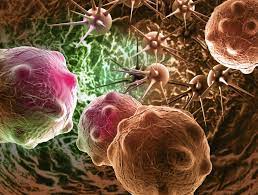



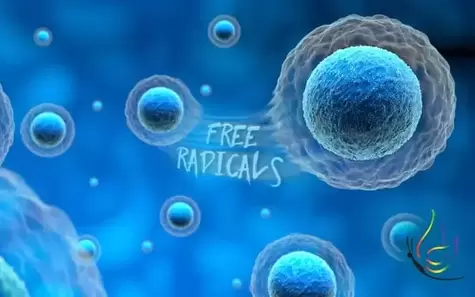
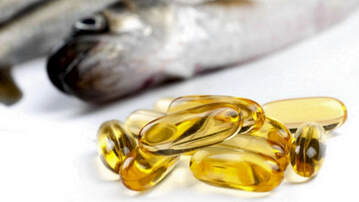
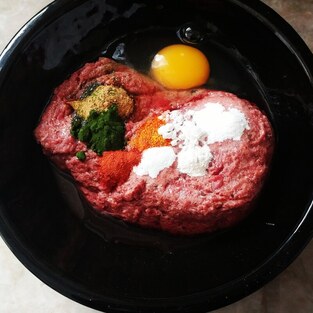






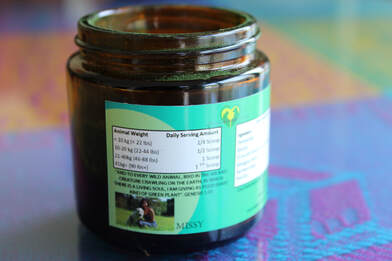
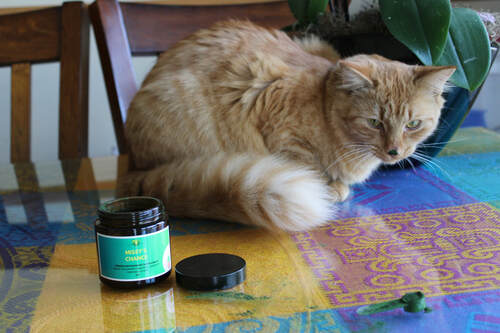
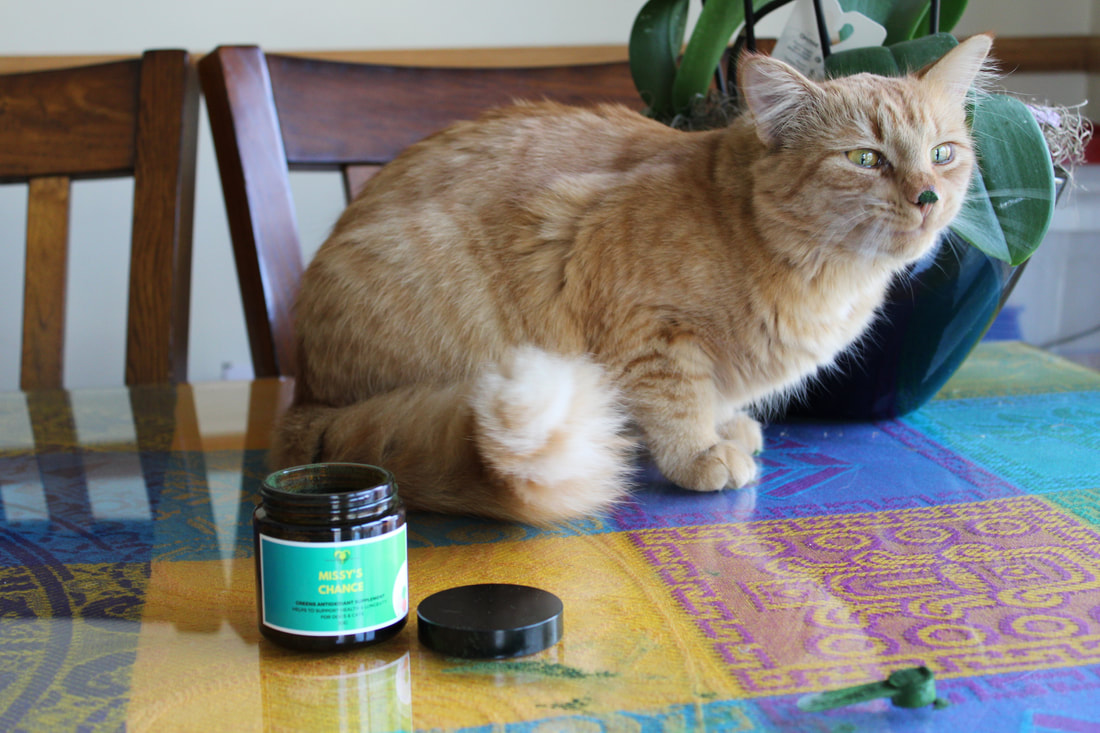

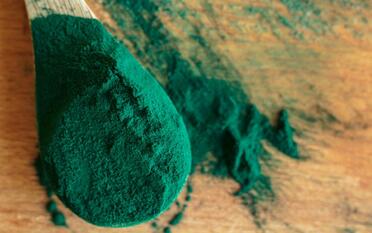

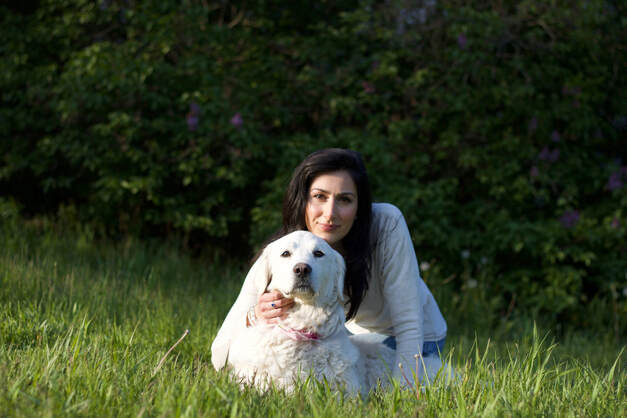
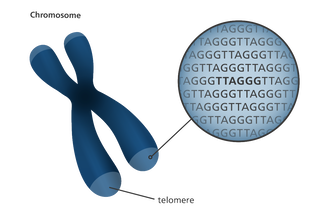


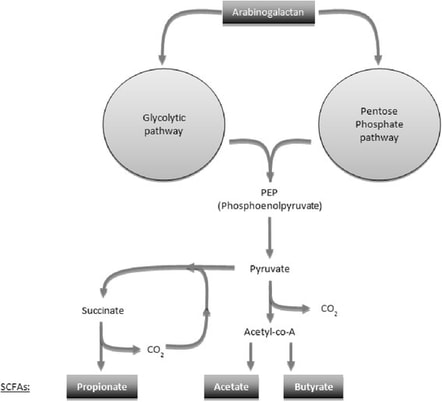
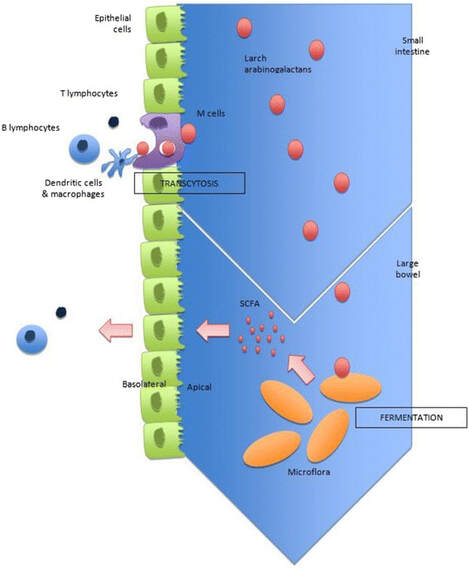
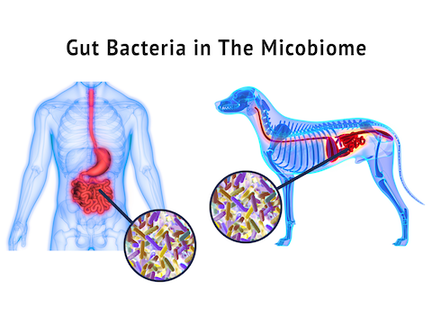
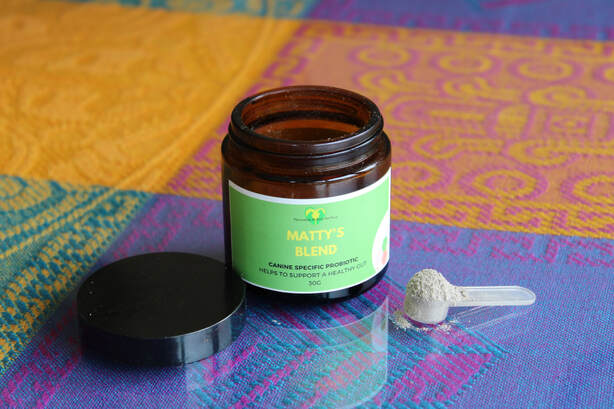

 RSS Feed
RSS Feed